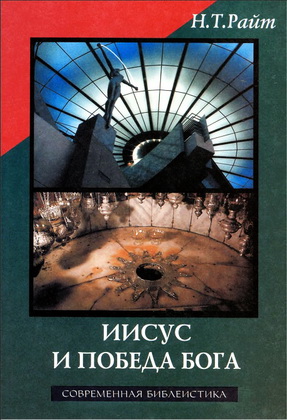
Ten Top Biblical Archaeology

This eBook, developed by the editors at the Biblical Archaeology Society, features ten of the most important and exciting archaeological finds covered in the pages of Biblical Archaeology Review (BAR) over the past three and a half decades.
It is by no means an exclusive list; others would perhaps make different selections for their top ten. Taken together, these “top discoveries,” from the nearly 4,000-year-old arched gate of Ashkelon to the lost fourth-century C.E.manuscripts of Nag Hammadi, offer a minicourse in Biblical archaeology.
This eBook includes the original BAR articles in which the finds were published, many authored by today’s most prominent Biblical archaeologists. Their articles not only highlight the historical and Biblical significance of these dramatic discoveries, but also place them in their appropriate archaeological context. In “When Canaanites and Philistines Ruled Ashkelon,” for example, Lawrence Stager provides a thorough overview of the port city’s extensive Bronze and Iron Age remains, including the massive walls and ramparts through which passed the world’s oldest arched gateway.
Similarly in “The Siloam Pool,” BAR editor Hershel Shanks details the recent discovery of a monumental, first-century C.E. Jerusalem pool that functioned as a Jewish ritual bath (miqveh) and may have been the place where Jesus cured the blind man (John 9).
Ten Top Biblical Archaeology Discoveries
Joey Corbett Assistant Editor, Biblical Archaeology Society
2015 MARCH/APRIL BAR VOL. 41 NO. 2
Ten Top Biblical Archaeology Discoveries - Joey Corbett - Table of Contents
- The Nag Hammadi Library. Nag Hammadi Codices Shed New Light on Early Christian History by James Brashler
- The 'Ain Dara Temple. The New 'Ain Dara Temple: Closest Solomonic Parallel. by John Monson
- The Tel Dan ("David") Stela. "David" Found at Dan
- Mona Lisa of the Galilee. Mosaic Masterpiece Dazzles Sepphoris Volunteers
- "Yahweh and His Asherah": The Kuntillet 'Ajrud Ostraca. Did Yahweh Have a Consort? by Ze'ev Meshel
- St. Peter's House. Has the House Where Jesus Stayed in Capernaum Been Found? by James F. Strange and Hershel Shanks
- The Siloam Pool. The Siloam Pool: Where Jesus Cured the Blind Man by Hershel Shanks
- Ashkelon's Arched Gate. When Canaanites and Philistines Ruled Ashkelon by Lawrence E. Stager
- Jerusalem's Stepped-Stone Structure. Jerusalem in David and Solomon's Time by Jane Cahill West
- Jerusalem's Babylonian Siege Tower. Found in Jerusalem: Remains of the Babylonian Siege by Suzanne F. Singer
Ten Top Biblical Archaeology Discoveries - Joey Corbett - The ‘Ain Dara Temple
A stunning parallel to Solomon’s Temple has been discovered in northern Syria. The temple at ‘Ain Dara has far more in common with the Jerusalem Temple described in the Book of Kings than any other known building. Yet the newly excavated temple has received almost no attention in this country, at least partially because the impressive excavation report, published a decade ago, was written in German by a Syrian scholar and archaeologist.
For centuries, readers of the Bible have tried to envision Solomon’s glorious Jerusalem Temple, dedicated to the Israelite God, Yahweh. Nothing of Solomon’s Temple remains today; the Babylonians destroyed it utterly in 586 B.C.E. And the vivid Biblical descriptions are of limited help in reconstructing the building: Simply too many architectural terms have lost their meaning over the ensuing centuries, and too many details are absent from the text. Slowly, however, archaeologists are beginning to fill in the gaps in our knowledge of Solomon’s building project.
For years, pride of place went to the temple at Tell Ta‘yinat, also in northern Syria.a When it was discovered in 1936, the Tell Ta‘yinat temple, unlike the ‘Ain Dara temple, caused a sensation because of its similarities to Solomon’s Temple. Yet the ‘Ain Dara temple is closer in time to Solomon’s Temple by about a century (it is, in fact, essentially contemporaneous), is much closer in size to Solomon’s Temple than the smaller Tell Ta‘yinat temple, has several features found in Solomon’s Temple but not in the Tell Ta‘yinat temple, and is far better preserved than the Tell Ta‘yinat temple. In short, the ‘Ain Dara temple, which was excavated between 1980 and 1985, is the most significant parallel to Solomon’s Temple ever discovered.
The ‘Ain Dara temple helps us better understand a number of enigmatic features in the Bible’s description of Solomon’s Temple. It also figures in the current debate, which has often raged in these pages,b as to the existence of David and Solomon and their United Monarchy in the tenth century B.C.E. And it is a magnificent structure in its own right. The ‘Ain Dara temple has beautifully preserved structural features, including limestone foundations and blocks of basalt. The building originally had a mudbrick superstructure—now lost—which may have been covered with wood paneling. The facade and interior walls are enlivened by hundreds of finely carved reliefs depicting lions, cherubim and other mythical creatures, mountain gods, palmettes and ornate geometric designs.




Комментарии
Пока нет комментариев. Будьте первым!